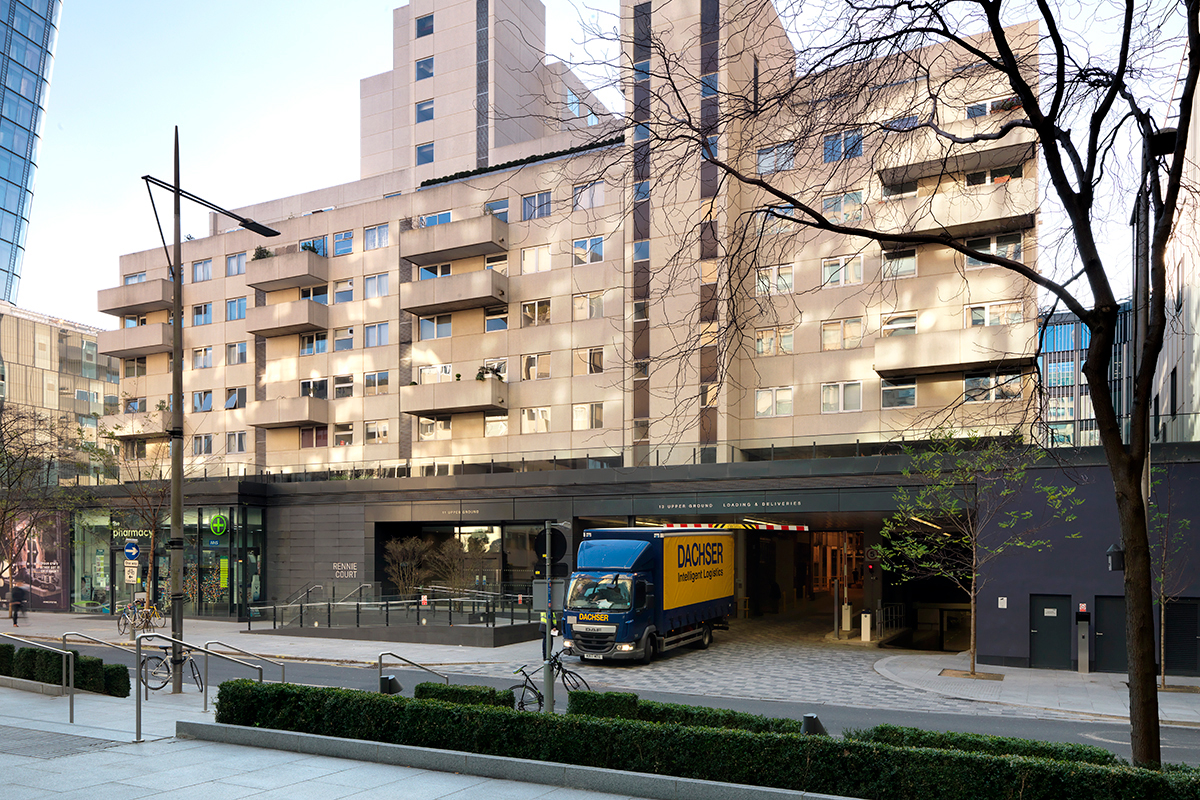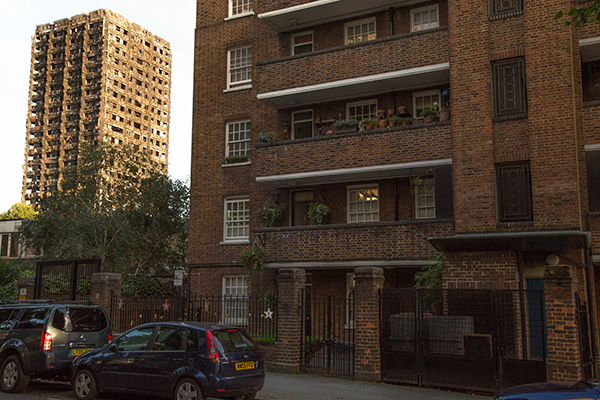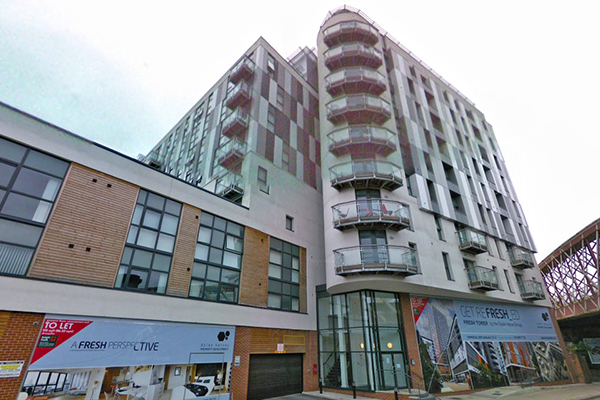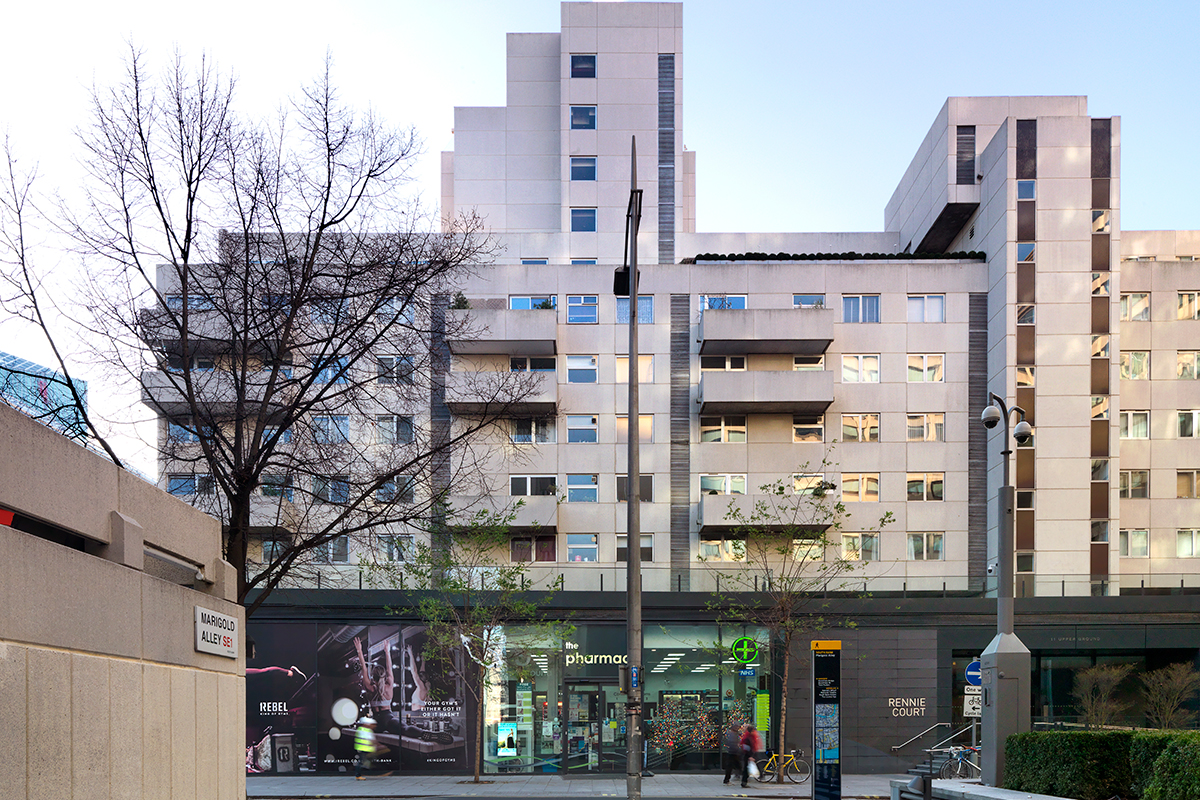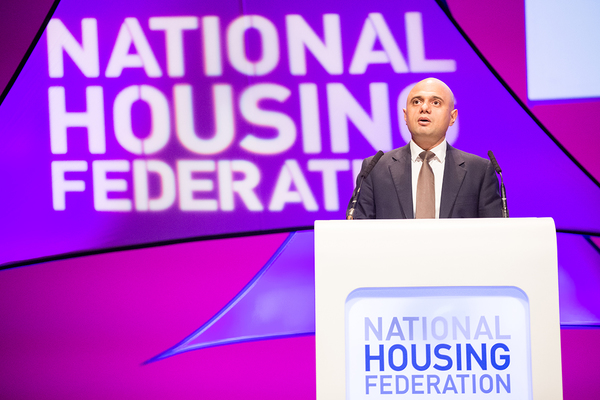Disguised by luxury: fire safety flaws in private blocks revealed
An Inside Housing investigation reveals safety issues are not confined to social housing blocks. Photography by Charles Hosea
Three months after the Grenfell Tower tragedy, communities secretary Sajid Javid took to the stage at the National Housing Federation’s annual conference to deliver one of the most important speeches of his career.
His purpose was to outline how the tragedy had prompted the government to launch a nationwide conversation about social housing. He told the packed audience of social housing professionals that since Grenfell, there was one question that “I keep coming back to”.
“In one of the richest, most privileged corners of the UK – the world, even – would a fire like this have happened in a privately owned block of luxury flats?” Mr Javid asked.
“If you believe the answer is no, even if you think it was simply less likely, then it’s clear that we need a fundamental rethink of social housing in this country.”
It was a major statement for the secretary of state to make.
After all, any suggestion that a fire like Grenfell would be impossible or “less likely” in a privately owned block of flats has potentially large ramifications for approaches to tackling fire safety in towers
It implies that there might not be system-wide problems, for example, with building regulations or industry-wide practices in construction, management and maintenance.
If such a theory were to guide policy responses to Grenfell, it would have implications for health and safety that would affect all residents, private or social.
Inside Housing set out to provide some answers to Mr Javid’s question in an attempt to inform future thinking in this area.
Our investigation has uncovered significant gaps in knowledge across the country six months on from Grenfell, which could be placing lives at risk.
It raises questions for the government about why progress has been so slow in identifying the level of risk across the private sector – and what more can be done to speed up progress.
Where else could the investigation start, though, other than with a privately owned block of luxury flats?
Rennie Court stands in one of the most desirable locations in London. Residents are just a 20-second walk from the south bank of the Thames, near Blackfriars Bridge in Southwark.
The upmarket Mondrian Hotel, which has its own cinema and views out over St Paul’s Cathedral, stands on the opposite side of the road and the high-profile 274-apartment One Blackfriars development is being built next door.
A large one-bedroom apartment in the block was recently on the market for £625,000 and a one-bedroom flat was offered for rent on Rightmove for £450 a week. A vast lobby contains numerous comfy chairs and leather sofas, a several-foot tall vase full of flowers and pictures on the walls with views of the nearby Thames.
Despite the luxury, in August this year the London Fire Brigade (LFB) found fault with Rennie Court, issuing it with an enforcement notice. The notice outlined a number of issues, including a failure to review the block’s fire risk assessment, failure in the effective management of the preventive and protective measures in the block, and a failure to provide and/or maintain adequate and clearly indicated emergency routes and exits that led to a place of safety.
"Since January 2015 the LFB has issued 87 enforcement notices on privately owned blocks of flats"
It also outlined a failure to ensure the premises and any facilities, equipment and devices for use by or protection of fire fighters are maintained in an efficient state, in effective working order and in good repair.
Rennie Court is in no way an exception.
Research by Inside Housing has found that since January 2015 the LFB has issued 87 enforcement notices on privately owned blocks of flats (although not all of them are as luxurious as Rennie Court). Over the same period it has issued 62 enforcement notices on blocks owned by social landlords. The enforcement notices on private blocks flag up a variety of issues.
In Islington, north London, an enforcement notice served on Flats 1-27 Vista House, Stroud Green Road, found a failure to take general fire precautions to ensure the safety of persons on the premises, a failure to review the risk assessment and failure to provide a suitable method of giving warning in case of fire.
Across London, enforcement notices on private blocks flag up problems ranging from lack of up-to-date fire risk assessments to potential breaches in compartmentation in buildings (meaning fire could spread quickly).
Nadeem Ghous-Chaudary, property services manager at Kings Reach Flats Management, the organisation on which the LFB served the enforcement notice for Rennie Court, says it has now either resolved or is in the process of resolving all the matters contained in the LFB notice. He says the block does now have an up-to-date fire risk assessment.
He adds that he thinks enforcement notices served since Grenfell may also reflect a change in approach from the LFB – meaning notices are likely to be issued in situations where they would not have been before the Grenfell tragedy.
“What we have learned is that post-Grenfell, the LFB has considerably tightened up its procedures,” Mr Ghous-Chaudary says. “We have had previous inspections with the LFB and the last one was 2016 which was passed with a clean bill of health.”
There are other indicators outside of enforcement notices that also give cause for concern. Freedom of Information Act requests by Inside Housing found that out of 53 councils with more than one privately owned tower block, 16 – or 30% – did not have information about the cladding installed on all of those blocks.
This is something that is of huge concern to some senior council figures. At the end of November, Nick Forbes, leader of Newcastle City Council and senior vice-chair of the Local Government Association, told a Treasury select committee that an issue that “really horrified me was that we knew the situation with the tower blocks that the council owns but we didn’t know the situation with the other tower blocks in the city because we have a deregulated building inspection process which meant that, not only did we not have oversight of them, we had no records of them”.
Click here to read more about our fire safety campaign
Mr Forbes told the committee that as a result “I was unable as a local authority leader in my area to give guarantees about public safety and that really, really worried me – that we had no ability to guarantee that we at least understood the position and know what to put right”.
Mr Forbes added that in the majority of cases it had been private developments “where we had building inspection issues because we just didn’t know what the situation was”. It had been difficult to arrange inspection of privately owned blocks in some cases because the owners were not based in the UK, he added.
He also raised the subject in his response to the independent review of building regulations and fire safety being carried out by Dame Judith Hackitt.
In a letter to the review, Mr Forbes said the council tried to use building regulation records to identify high-rise buildings in the city.
“It quickly became apparent that in many locations developers have been able to build properties without local authority oversight of building regulations,” he wrote. “In some cases these buildings have been using materials that have since been found to pose a risk, but there has never been any requirement of the developers to register this information with the local authority. The privatisation of fire safety rules must now be reviewed.”
A spokesperson for Newcastle Council says it did not previously maintain a list of privately owned tall buildings within its borders as there is no requirement to do so. It has now identified 60 privately owned residential buildings taller than 18 metres.
“Not all councils are keen to talk about this issue.”
It has not yet identified the owners of all these buildings as “the priority has been to engage with owners of those buildings where the local authority considers the owner should be making further investigations of external cladding”.
Not all councils are keen to talk about this issue. Richmond upon Thames Council, for example, turned down an information request for a list of privately owned blocks and whether or not they had cladding, stating that identifying buildings with an issue “could cause widespread public panic”.
The LFB has also been worried about the broader issue. At a meeting of the London Fire and Emergency Planning Authority on 23 November, LFB commissioner Dany Cotton said that it had conducted 458 initial inspections to check general fire precautions in blocks of all ownership types with aluminium composite material (ACM) cladding.
But she added: “While engagement with responsible persons at the affected premises we have been notified of has generally improved, officers remain concerned that there is still potentially a large number of privately owned residential premises that have yet to engage with the testing process.”
"In many locations developers have been able to build properties without local authority oversight of building regulations", Nick Forbes, leader of Newcastle City Council
Far from being safer than blocks owned by councils and social landlords, it may even be the case that privately owned blocks are proportionally more risky.
A briefing issued last month by the LGA’s Fire Services Management Committee suggests: “From what we have heard from the construction industry, it seems ACM cladding has been more widely used on private high-rise residential buildings than on social housing tower blocks. The proportion of private high-rise residential buildings with ACM cladding that needs to be removed may well be greater than in council and housing association buildings.”
It added that the number of affected council blocks amounted to no more than 3% of the total number of council-owned blocks.
“If the number of private residential buildings with ACM cladding is higher than in the social housing sector this will have significant resource implications,” the briefing reads.
Inside Housing understands that work to identify the locations of privately owned blocks across England has largely been completed.
But six months on from Grenfell, the ownership status of many of these blocks has yet to be established, along with whether or not they have ACM cladding.
The Department for Communities and Local Government (DCLG) has appointed relationship managers to help the seven councils with the largest number of private high-rise residential buildings.
A spokesperson for the DCLG said it has been “working with councils and private residential landlords across the country to identify buildings that might be at risk and ensure action is taken to make them safe”.
“DCLG has appointed relationship managers to help the seven councils with the largest number of private high-rise residential buildings.”
So, what about Mr Javid’s big question? The evidence seems to suggest that problems with cladding and fire safety in privately owned blocks exist on a similar – or possibly greater – scale to those in the social sector. Worse, council leaders in a number of areas are as yet unable to guarantee the safety of all their citizens as a result of a lack of historic information and complicated ownership arrangements.
As to the future? A spokesperson for the LFB states: “Every building owner, regardless of whether they are in the public or private sector, should engage with the DCLG’s programme of cladding testing and review their fire risk assessments accordingly.”
A spokesperson for Newcastle Council says it would be “wrong to presume” that fire safety was any less of an issue in private than social blocks.
While a conversation about social housing in the UK is clearly needed, it should not distract from systemic safety issues that have the potential to affect all high-rise residents.
Grenfell: six months on
We have published a series of articles to mark the six month anniversary of the Grenfell Tower fire, which killed 71 people on 14 June.
Click on the links below to read the pieces:
Six months on from Grenfell, what has changed? Our news team looks at the progress made since the fire
Grenfell: the survivors' stories Read moving speeches to MPs from four people who survived the fire
Councils have no information on privately owned tower blocks It is not just social housing blocks councils need to keep an eye on when it comes to fire safety
Disguised by luxury: fire safety flaws in private blocks revealed Our research challenges Sajid Javid's suggestion a Grenfell-style fire couldn't happen in a luxury block
We need to go much further on fire safety Our editor Emma Maier outlines Inside Housing's view on the state of play
Half of high rises could get sprinkler refit We reveal the sector's projected spend on fire safety improvements since the disaster
The French connection The parallels between a fire in France and the Grenfell tragedy
Less than half of council tower blocks assessed since Grenfell Our exclusive research reveals the state of play regarding councils' fire risk assessments
Circus therapy for children affected by Grenfell How a group offering circus activities is bringing the community together
Dangerous cladding to be removed from giant modular tower blocks Housing association Notting Hill Housing is to spend £8m to remove dangerous material on six of its blocks
